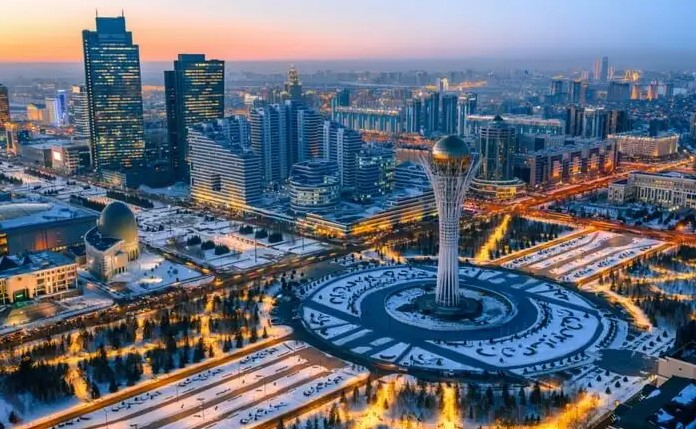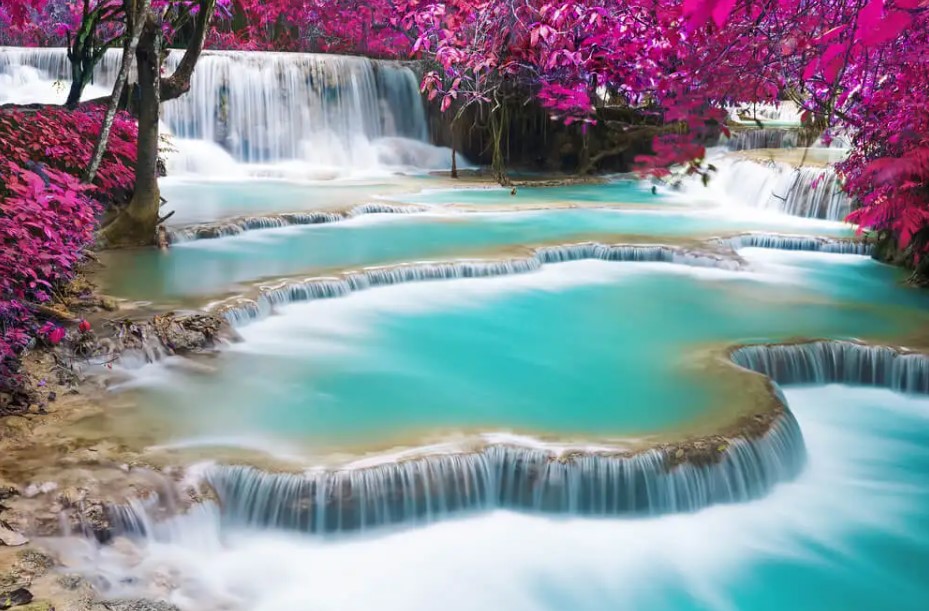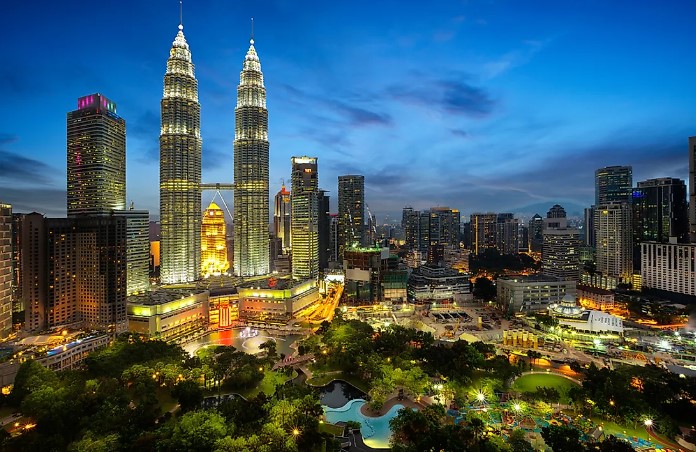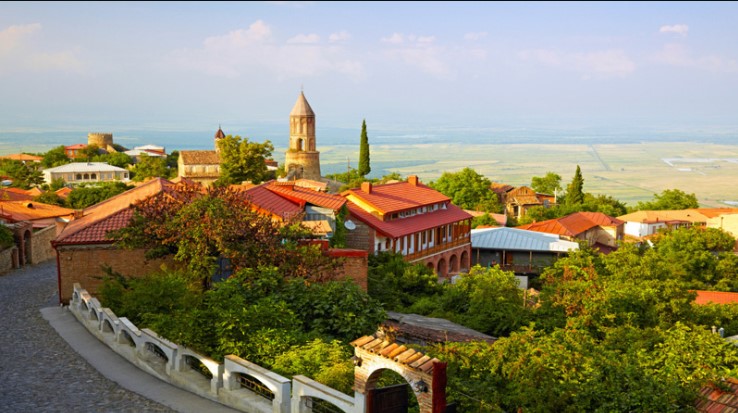Here is a list of top 10 most beautiful tourist destination in Asia. This list of the most beautiful tourist destination in Asia will be a magical event during your visit. However, in this article, I discuss the top 10 most beautiful tourist destination in Asia. So, continue reading and discover these prettiest & most beautiful tourist destination in Asia.
01. Bhutan
Bhutan, officially the Kingdom of Bhutan, is a landlocked country in South Asia. It lies between the eastern Himalayas, China to the north and India to the south. A mountainous country, Bhutan is known as "Druk Yul" or "Land of the Thunder Dragon". Nepal and Bangladesh are located near Bhutan but do not share a land border.
The country has a population of over 727,145 and an area of 38,394 square kilometers and ranks 133rd in terms of land area and 160th in terms of population. Bhutan is a constitutional democratic monarchy where the king is the head of state and the prime minister is the head of government. Mahayana and Vajrayana Buddhism are the state religions and Je Khenpo is the head of the state religion.
The subalpine Himalayan mountains in the north rise from the country's lush subtropical plains in the south. Bhutan is in the Himalayas, 7,000 meters above sea level. Gangkhar Puensam is the highest peak in Bhutan and the highest peak in the world. Bhutan is notable for its wildlife diversity, including the Himalayan takin. The capital and largest city is Thimphu.
02. Bangladesh
Bangladesh, officially the People's Republic of Bangladesh, is a country in South Asia. It is the eighth-most populous country in the world, with a population of over 165 million in an area of 148,460 square kilometers.
Bangladesh is one of the most densely populated countries in the world, and shares land borders with India to the west, north and east, and Myanmar to the southeast; It has a coastline along the Bay of Bengal to the south.
It is narrowly separated from Bhutan and Nepal by the Siliguri Corridor; and the Indian state of Sikkim to the north from China. The capital and largest city Dhaka is the political, financial and cultural center of the country. Chittagong, the second largest city, is the busiest port on the Bay of Bengal.
The official language is Bengali, one of the eastern branches of the Indo-European language family. Bangladesh forms a sovereign part of the historical and ethnographic region of Bengal, which was partitioned during the partition of India in 1947. The country has a Bengali Muslim majority.
03. India
India, officially the Republic of India, is a country in South Asia. It is the seventh largest country by area, the second most populous country, and the most populous democracy in the world. Bounded by the Indian Ocean to the south, the Arabian Sea to the southwest, and the Bay of Bengal to the southeast, it shares a land border with Pakistan to the west; China, Nepal and Bhutan to the north; and Bangladesh and Myanmar to the east.
In the Indian Ocean, India is near Sri Lanka and the Maldives; Its Andaman and Nicobar Islands share a maritime border with Thailand, Myanmar and Indonesia. Modern humans arrived in the Indian subcontinent from Africa 55,000 years ago.
Their long occupation, primarily as hunter-gatherers in various forms of isolation, has made the region extremely diverse, second only to Africa in human genetic diversity. Settled life emerged 9,000 years ago on the western edge of the Indus River basin in the subcontinent, gradually evolving into the Indus Valley Civilization of the third millennium BC. By 1200 BCE, an ancient form of Sanskrit, an Indo-European language, had spread to India from the northwest.
04. Nepal
Nepal, formerly the Federal Democratic Republic of Nepal, is a landlocked country in South Asia. It lies mainly in the Himalayas, but also includes parts of the Indo-Gangetic Plain, the Tibet Autonomous Region of China to the north, and India to the south, east and west, while it is narrowly separated from Bangladesh.
Siliguri Corridor, and the Indian state of Sikkim from Bhutan. Nepal has a diverse geography, including fertile plains, subalpine forested hills and eight of the world's ten highest mountains, including Mount Everest, the highest point on Earth. Nepal is a multi-ethnic, multi-lingual, multi-religious and multi-cultural state, with Nepali as the official language.
Kathmandu is the capital and largest city of the country. The name "Nepal" is first recorded in texts of the Indian subcontinent from the Vedic period, the era of ancient Nepal when Hinduism was established, the country's main religion. In the middle of the first millennium BC, Gautama Buddha, the founder of Buddhism, was born in Lumbini in southern Nepal. Parts of northern Nepal were associated with Tibetan culture.
05. China
East Asian country
China, officially the People's Republic of China, is a country in East Asia. It is the most populous country in the world, with a population of over 1.4 billion, slightly ahead of India. Beijing, the capital of China, is the most popular tourist destination in China every year. You can experience the most of Chinese culture and history in one destination.
06.
Myanmar, officially the Republic of the Union of Myanmar, also known as Burma, is a country in Southeast Asia. It is the largest country by size in Mainland Southeast Asia, and has a population of approximately 54 million as of 2017.
Myanmar is bordered by Bangladesh and India to the northwest, China to the northeast, Laos and Thailand to the east and southeast, and the Andaman Sea and Bay of Bengal to the south and southwest. The country's capital city is Naypyidaw, and its largest city is Yangon.
Early civilizations in the area included the Tibeto-Burman-speaking Pyu city-states of Upper Myanmar and the Mon kingdoms of Lower Myanmar. In the 9th century, the Bamars entered the upper Irrawaddy valley and after establishing a pagan kingdom in the 1050s, Burmese language, culture and Theravada Buddhism gradually became dominant in the country.
The pagan empire fell under Mongol attack and several warring states emerged. In the 16th century, reunified by the Tang Dynasty, the country briefly became the largest empire in Southeast Asian history.
07. Cambodia
Cambodia, officially the Kingdom of Cambodia, is a country located in the southern part of the Indochinese Peninsula in Southeast Asia, covering an area of 181,035 square kilometers, bordered by Thailand to the northwest, Laos to the north, Vietnam and Vietnam to the east.
Gulf of Thailand to the southwest. The capital and largest city is Phnom Penh. The sovereign state of Cambodia has a population of over 17 million. Buddhism is included in the constitution as the official state religion and is practiced by over 97% of the population.
Cambodia's minority groups include the Vietnamese, Chinese, Chams and 30 hill tribes. Cambodia has a tropical monsoon climate with two seasons, and the country consists of a central floodplain around Tonle Sap Lake and the Mekong Delta, surrounded by mountainous terrain.
The capital and largest city is Phnom Penh, the political, economic and cultural center of Cambodia. The kingdom is an elective constitutional monarchy with a monarch, currently Norodom Sihamani, elected as head of state by the Royal Council of the Throne.
08.
Japan is an island country in East Asia. It is bounded by the Sea of Japan to the west and the Pacific Ocean to the east, and stretches about 3,000 km along the continent's coastline from the Sea of Okhotsk in the north to the East China Sea and the Philippine Sea in the south.
Part of the Pacific Ring of Fire, Japan encompasses a stratovolcanic archipelago of approximately 7,000 islands, with the five main islands comprising 97% of the country's 377,975 square kilometers of land. Japan is officially divided into 47 prefectures and traditionally into eight regions.
About two-thirds of the country's territory is mountainous and heavily forested, with less than one-sixth suitable for agricultural use. As a result, Japan is one of the most densely populated and urbanized countries in the world, with more than 90% of its population living in urban areas.
The largest of these is the Greater Tokyo area, which is the world's most populous metropolitan area and home to over 38 million people.
09. Thailand
Thailand, historically known as Siam and officially the Kingdom of Thailand, is a country in Southeast Asia, located in the center of the Indochina peninsula, covering an area of 513,120 square kilometers with a population of approximately 70 million.
The country is bordered by Myanmar and Laos to the north, Laos and Cambodia to the east, Thailand and the Gulf of Malaysia to the south, and the Andaman Sea and Myanmar to the west. Thailand shares maritime borders with Vietnam to the southeast and Indonesia and India to the southwest.
Bangkok is the country's capital and largest city. So people migrated from southwest China to mainland Southeast Asia from the 11th century. Indian kingdoms such as the Mon, the Khmer Empire, and the Malay kingdoms ruled the region, competing with Thai kingdoms such as the kingdoms of Ngoenyang, Sukhothai, Lan Na, and Ayutthaya, which rivaled each other.
European contact began in 1511 with the Portuguese diplomatic mission to Ayutthaya, which became a regional power by the late 15th century. Ayutthaya reached its peak in the 18th century, until it was destroyed in the Burmese-Siamese War.
10. Laos
Laos is a Southeast Asian country located along the Mekong River and known for its mountainous terrain, French colonial architecture, hill tribe settlements and Buddhist monasteries.
The capital, Vientiane, is home to the Luang Monument, which is said to contain the Buddha's chest bone, the Patuxai War Memorial, and the Talat Sao (Morning Market), a maze jam-packed with food, clothing and craft stalls.















































































































































